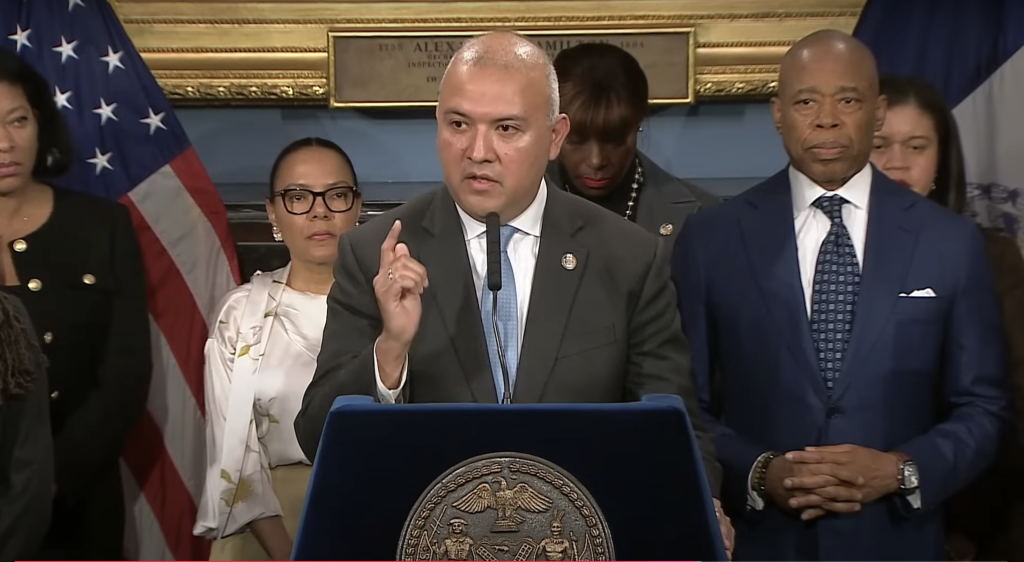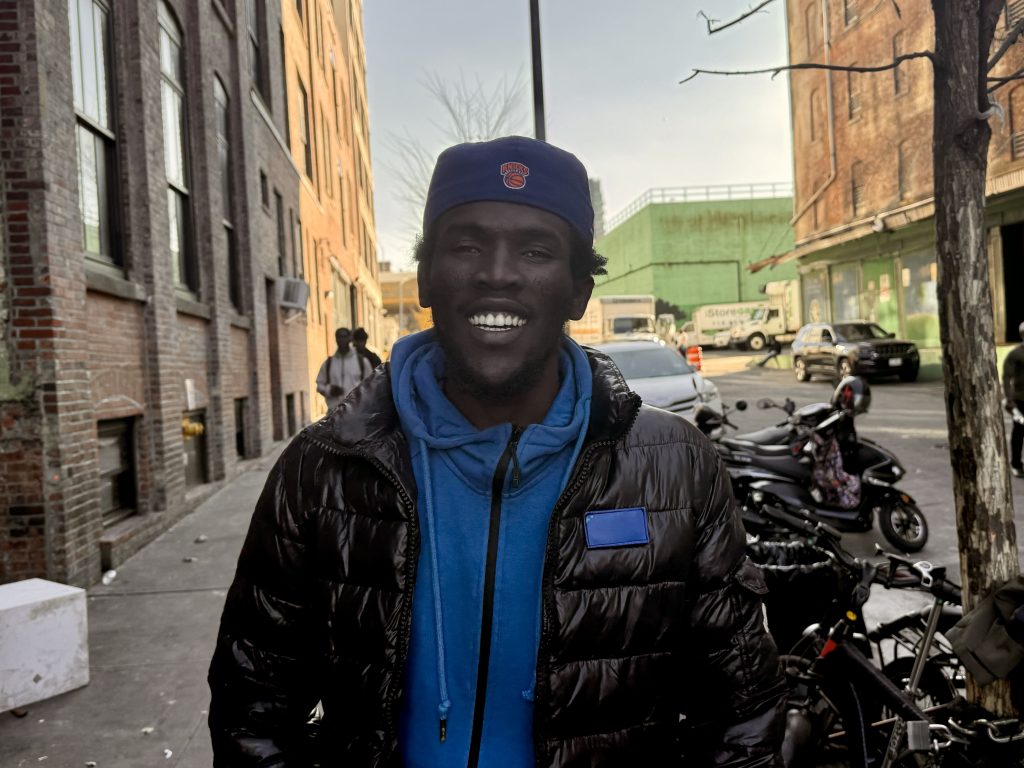
By: Jack Delaney
Jdelaney@queensledger.com
In the days following last Tuesday’s election, immigration lawyers fielded a deluge of calls from migrants wondering how Trump’s victory could affect their cases.
The results saw Donald Trump claim the popular vote — only the second time a Republican has done so since 1988 — in part by promising a crackdown on immigration. His focus on the issue resonated in New York City, where every county shifted rightward in comparison to the 2020 election. With control of the House likely to fall into Republican hands as well, analysts see a Trump unfettered by many of the checks he faced in his first term.
“[My clients] are in fear right now of mass deportation,” said Saidou Ba, a legal advisor based in Brooklyn. “I read that [Trump] may even use the military, ICE, FBI, all these agencies to round up people. Everybody’s scared right now, to be honest with you.”
And even as a vociferously nativist candidate was chosen to lead the country, it’s also significant that it came during a week marked by landmark shifts in immigration policy at both the local and federal levels.
Thursday alone saw a flurry of changes. First, the city announced that it was not renewing a hotly contested program that gave prepaid debit cards to migrants, distributing $3.2 million to some 2,600 families living in hotels for food and baby supplies. Instead, it will restart an initiative that delivered meals directly to hotels. This decision followed the news a week before that the city plans to close all 10 of its upstate shelters, which currently house 1,100 migrants, by the year’s end.
Second, a federal judge struck down Biden’s ‘parole-in-place’ (PiP) program, which was introduced earlier this year but put on hold. It would have offered a route to legal status for undocumented spouses and stepchildren of U.S. citizens who have been living in the country for at least 10 years, encompassing at least 750,000 people — which would have made it the largest immigration relief program since DACA.
And third, that same day, another judge ruled that NYC could not stop Texas from offering migrants free bus rides to the city by invoking a two-centuries old “anti-pauper” law.
Amid this tumultuous week, the million dollar question asylum seekers currently face is to what degree Trump’s rhetoric will become reality.
On Hall St. in Brooklyn, at a shelter in Clinton Hill that has drawn the ire of some residents as it has swelled to accommodate several thousand asylum seekers, the mood on Thursday was grim but subdued.
“Right now, [the uncertainty] is what worries us,” said Mohamedou, an asylum seeker from Mauritania who requested only his first name be used due to his ongoing immigration proceedings. “We’re not sure what he’ll do. He constantly says that he’ll deport all immigrants, but who knows if he’ll do that.”
Like many at the Hall St. location, Mohamedou has been at the shelter for nearly a year, but is still waiting for his work permit to be processed. As a result, there’s not much to do but wait.
“Currently, all we can do is to stay focused on our cases,” he mused. “At the end of the day, it’s Trump who won. We just hope he’ll let us stay.”
As Trump’s plans coalesce, Ba said he was repeating two pieces of advice to everyone who called: make sure you have a case open before January 20, and keep your record clean.
Moussa Thiam, a fellow Mauritanian who had received his working permit, was cautiously optimistic. “I have confidence in the justice system of the U.S,” said Thiam, who had been at the shelter for a year as well. “The whole world won’t change immediately. There are laws, there’s justice.”

One looming question is whether Trump’s second term will look much like his first, or mark a new chapter of harsher measures such as mass deportation. Several immigration lawyers and migrants predict the former, including Ba, who noted that “he was president in 2016 — nothing will be different.”
That first term was a mixed bag, according to a report by the Migration Policy Institute.
The administration tried to end DACA, but was stymied by federal courts. It effectively stopped considering new applications from September 2017 to July 2020, which meant that 500,000 young foreign nationals who could have been eligible for DACA during this period were unable to apply. But courts ordered that it be reinstated in 2020.
Elsewhere, it successfully eroded the eligibility of many migrants for public benefits, through tactics such as removing lack of English proficiency as a partial qualification for Social Security disability insurance.
It also sped up the pace of immigration cases. From 2016 to 2020, the number of cases adjudicated rose 61%, from 143,000 to 232,000, even with sporadic closures of immigration courts due to Covid.
And it leveraged the pandemic as a pretext to dramatically reduce cases, albeit briefly. Under a 1944 law (Title 42, which continued under Biden) that gave the surgeon general the power to block foreign nationals from immigrating for public health reasons, the CDC announced blanket bans on asylum claims and greenlit 2.8 million expulsions from 2020 to 2023.
Overall, Trump did achieve his goal of reducing humanitarian pathways to immigration. In four years, from 2016 to 2020, refugee admissions plummeted from 85,000 to 12,000. Only 26% of asylum applications were approved in 2020, compared to 43% when Trump took office in 2016.
Yet the number of arrests and forced deportations actually decreased compared to the Obama years. And the administration had to contend with pushback from local governments, notably New York, which in 2019 passed a law allowing undocumented individuals to receive driver’s licenses, while limiting federal immigration officials’ ability to access state DMV databases.
Though Mayor Eric Adams’ efforts at detente with Trump — prompting speculations that he may be angling for a presidential pardon — have worried activists, city officials reaffirmed their commitment to protect migrants at a media briefing on Wednesday, the day after the election.
“I want to assure our immigrant communities that we will be working together, the entire administration, to ensure that they have the correct information, that they are not victims of hate, and that they know that this will continue to be a sanctuary city,” said Manuel Castro, Commissioner of the Office of Immigrant Affairs. “We will be protecting their information and will not be following the instructions of the federal government in cases of mass deportations.”
Regardless of city support, advocacy groups are preparing to challenge a possible mass deportation order. Hundreds gathered on Monday at Trump Tower, for instance, to protest what they view as the president-to-be’s demonization of migrants.
“The Trump administration’s anticipated push for increased deportations, targeting millions, represents a direct threat not only to immigrant families but to the very fabric of communities across the nation,” said Carola Otero Bracco, Executive Director of the nonprofit Neighbors Link. “As we have seen in the past, our entire community will stand together to uphold what is just, defending the rights, humanity, and contributions of immigrants.”
Concretely, the conservative policy roadmap Project 2025, a hot topic on the campaign trail, calls for the elimination of two classes of visas that cover victims of abuse and human trafficking. It also favors a repeal of the Temporary Protected Status designation, which allows certain foreign nationals to stay in the U.S. for up to 18 months if the situation in their home country is deemed too dangerous.
Beyond that, migrants at the Hall St. shelter hoped that the U.S. economy’s reliance on immigrant labor would temper any policy changes.
“Those who are rich are rich because of immigrants,” asserted Thiam. “Does a developed country exist without immigrants? No, it doesn’t.”
Ba was similarly skeptical that illegal immigration would be halted completely, despite all the rhetoric. “Especially in New York — New York City is run by immigrants. All the small jobs are done by immigrants with cheap labor,” he said. “Nobody can deny it. They can’t say it loudly, but it’s good for the economy.” His comments echo a 2024 report by the Institute on Taxation and Economic Policy, which found that the estimated 676,000 undocumented migrants who work in New York pay $3.1 billion annually in federal, state, and local taxes.
The new administration won’t have the legal affordances of a pandemic, but with a mayor seemingly open to parlay with Trump and a Republican-controlled Congress, migrants throughout the city remain unsure what to expect, for now.
“The first time Trump was in office, he was completely unprepared,” said Debbi Klopman, an immigration attorney in Brooklyn. “This time, he’s got his troops organized. But we still don’t know what that means.”


